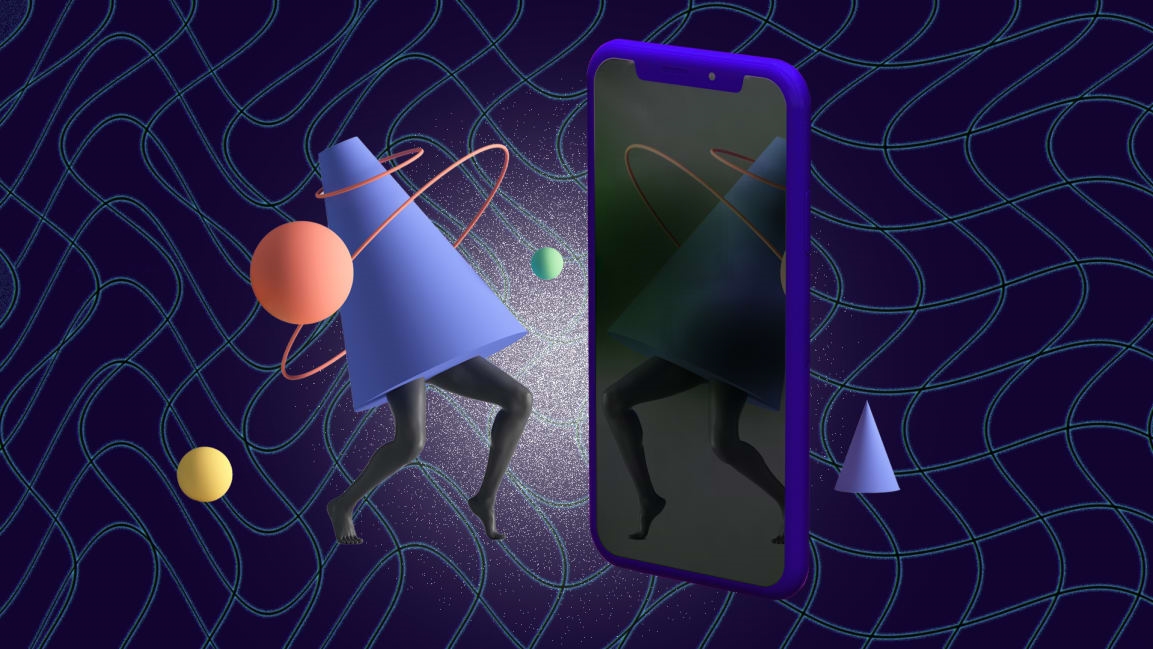Nobody really knows how we’re going to shop in the metaverse
We are a society that shops—a lot. It is among the things we do the most—particularly during this pandemic. We’ve procured supplies, feathered our nests, replaced and renewed items in our homes, and bought more survival supplies and personal protective equipment than we’d ever imagined.
So, how are we going to shop in the metaverse?
We should start by asking ourselves what we want to buy and where and how we will be using it. If venture capitalists and Mark Zuckerberg have their way, we’ll be donning goggles and wandering around a colorfully rendered world engaging in various activities. At least some of our actions will be commercially oriented to generate revenue for faceless digital landlords. In essence, we’ll be shopping just by existing there.
Living in the metaverse is going to cost money, so shopping will be the cost of entry. If we’re going to be represented by avatars interacting in a realistic 3D environment, we’re going to need digital clothes, digital homes, digital everything. We might need second digital jobs to earn digital cash to pay for all of this stuff. We’ll even be paying digital taxes.
One problem with the metaverse as it has been shown to us in videos from Meta and others is that people don’t have fully represented bodies—just the top halves. There go the nonfungible token pants and shoe sales right there. Meta’s advertising shows people flying in colorful small planes, but where the company tells us we’re going we won’t need planes—or the rest of our bodies. So the rendered world seems more of a replica of what we’ve already got, but digital. If we do have to get around, what will the modes of transportation be like? And more critically, how much will they cost us?
It is likely that the metaverse is going to give us an option to shop in many new ways and express status in new ways, too. One way we’ll be continuing to shop is from the comfort of our homes—and pajamas. We might be all dressed up in our NFT finest, parading down some version of Beverly Hills’ Rodeo Drive, all while sitting alone on our couches. But will there even be a Rodeo Drive in the metaverse? Do we need streets in a synthesized world where we technically don’t even need bodies?
Outside of the metaverse, shopping in stores requires some physical mobility modality—a way to get around. Stores require walking, rolling, or just being in them physically, but even today we are transitioning to hiring people to do that for us via services such as Instacart. These proxy shoppers sometimes need to go to different locales in the store and text us photos to secure the right items for our cart. It’s like we’re there—kind of. But we aren’t, and it isn’t clear just how much “there” there will be with shopping in the metaverse, either.
Shopping is social
Shopping is a social, cooperative activity. Whether we are with people physically (locally or remotely) or merely thinking about them when we shop, we interact socially. We negotiate, ask for assistance, and garner opinions. We help others shop, too. We might pick out something to hand to a friend in a dressing room, ask a question of a salesperson, negotiate space when passing another person, or make small talk while in line waiting to pay.
Most of that social aspect has been eroded by digital shopping, but social interaction will continue in the metaverse. We already shop in malls, on main streets, and in box stores. We also shop on buses, planes, trains, and boats, in our cars, from our desks, couches, and beds, in restaurants, at athletic events, concerts, etc. These activities are social, and even if we seem glued to our screens in public, people are navigating around us, or perhaps talking with us as our attention dips in and out.
The metaverse—once it arrives—likely won’t look much like the current demos.
On the back end of our purchases, shopping is threaded with massive amounts of human cooperation and coordination. People facilitate the procurement of raw materials that are used in what we buy, and process them using tools that others have forged and made. Things are created and shipped and warehoused and picked up and loaded and packed and shipped again. But since we can’t see all of that activity, we lose sight of just how much we need each other, and just how powerful that supply chain is—until something unravels it. When it does, we become aware that empty grocery shelves, gadgets being sold out because of a chip shortage, or any one of thousands of micro-to-macro, analog-to-digital disruptions can stop us, or at least force us to reroute, recalculate, and redefine our physical and social needs to respond to the disruptions.
Shopping digitally has given us a way to take all of that social coordination for granted as it is out of our line of sight. We shop using laptops, tablets, and mobile phones, accessing grids and lists of merchandise on online “stores,” many of which look similar whether we’re buying pizza rolls or a car. The items we purchase are commodities, and the experience of shopping on the web can feel commoditized as well. For example, to date digital shopping has not been tactile. We can’t tell how big or small items are, judge the cut of garments, or feel the roughness of sandpaper. We can’t even assume we’re seeing accurate representations of colors.
The video clips and rotatable 3D models on shopping sites can help us understand items we’re considering buying, but there’s still no tactile feedback. That’s something that metaverse technology could address through augmented or virtual reality with haptic feedback, giving digital shopping a tactile dimensionality that has so far been missing.
Beyond the current demos
Thankfully, the metaverse—once it arrives—likely won’t look much like the current demos. Instead, it will mix rendered environments and analog ones, with variations between full submersion in synthetic worlds and augmented layers on top of our analog world. For those of us still willing to go out of our homes and wear AR glasses rather than VR goggles, which obscure our vision, we’ll have new ways of viewing what used to be bound to physical location. Using these technologies, we will be even more able to transcend the borders and boundaries of the physical spaces where we currently shop.
Today, we can consult our phones for deals elsewhere while we’re in any retail establishment. With the metaverse, we’ll be able to view AR data layers over physical merchandise wherever we are, with potential access to enormous data repositories, agents, and inventory. We’ll go from being mere shoppers to being inventory managers, purchasing agents, supply chain analysts, and more. Retailers will have a different relationship to us as well, competing to differentiate themselves from whoever else might pop up in our viewfinder and offer us something better and shinier. They’re going to have to up their marketing game, lower their margins, and court us.
Unless, of course, we need them—for status. Already, big brands such as Gucci, Chanel, and Balenciaga are creating virtual garments so that we can port our status and style to our new virtual selves (at least the top halves) in the VR part of the metaverse. Twitter is also enabling NFT avatars in user profiles. Such differentiators will become more coveted. This is where retailers will have a chance—exclusivity and personalization of digital status items for the metaverse will be another way we find status, as we do now.
Crafting the future, pixel by pixel. Vault is building its own virtual world on @TheSandboxGame. Discover more https://t.co/wEUMFPiNsg #GucciVault pic.twitter.com/GVW1mpyJQC
— gucci (@gucci) February 9, 2022
While this aspect of the metaverse could seem like a more intense and commercially interdependent version of Second Life, it isn’t clear whether we’ll really “own” anything, or if we’ll be the ones owned by retailers and digital landlords as we rent and pay for microtransactions to exist in a world that we’ll be increasingly forced to inhabit in one way or another.
Our activities will likely create fodder for some giant dossier of our habits as we shop—and live—in the metaverse.
This type of shopping for digital might continue through the web, eventually transforming today’s e-commerce websites into VR simulations of stores, as some retailers are already doing. These VR stores could exist in designed “landscapes” that are synthetic and computer generated, taking their cues from Second Life or Minecraft. But will VR shopping environments in the metaverse appeal to us—or even strike us as being necessary? We won’t need to eat, so we won’t be able to get a Cinnabon in the metaverse while we shop, at least not one we could actually eat. Will we be okay without a food court? Or will some Instacart driver deliver a Cinnabon to us at home while we are at the Cinnabon counter in the metaverse in our NFT Gucci jacket?
Some aspects of shopping in the metaverse could be alarming. If we’re moving to a virtual environment or to a digital always-on layer on top of the Commons, we’re going to be living in a blended reality. Walking around the Commons wearing AR glasses while trying to shop will divide our attention and distract us—and if others are doing the same thing at the same time, it could create accidents as people collide. Additionally, our commerce activities will likely create fodder for some giant dossier of our habits as we shop—and live—in the metaverse. When all of our metaverse shopping actions are mediated, they can be analyzed, and assumptions can be made about us.
But shopping in the metaverse will likely not work as it is presently envisioned, and that gives us some room to plan our strategies. People are creative and often express themselves and try to solve problems in unanticipated ways. One option will be to simply not participate in Meta’s metaverse for shopping as long as we can. While metaverse shopping may appear to redefine the social fabric we have and make it more challenging to connect to each other, we still have the option to work with real salespeople in physical locations—at least for now, or until we get some fashionable digital clothes to cover our avatar torsos.
S. A. Applin, PhD, is an anthropologist whose research explores the domains of human agency, algorithms, AI, and automation in the context of social systems and sociability. You can find more at@anthropunk and PoSR.org.
Fast Company , Read Full Story
(20)



